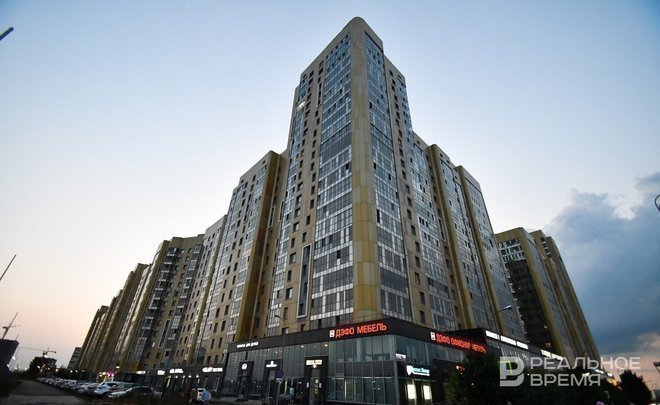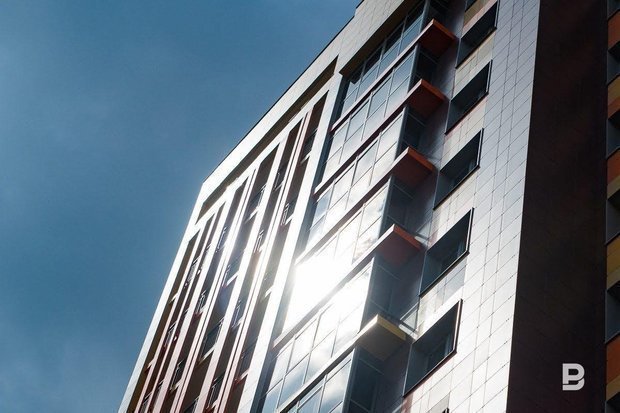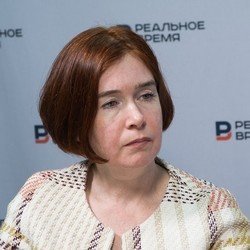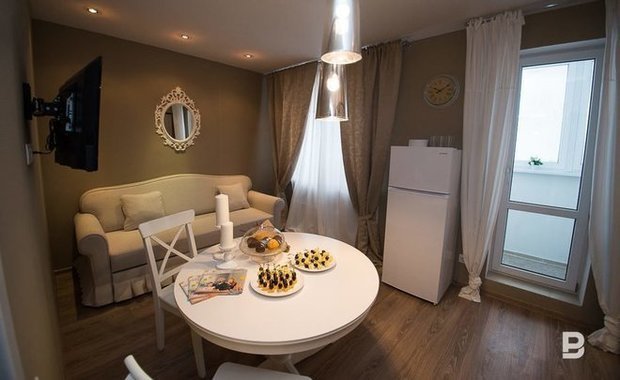Mortgage paradox: Tatarstan selling more and more housing of a smaller size
What is the situation in the primary real estate market and what could be the consequences of a record increase in the number of transactions

Rosreestr of Tatarstan has recorded a sharp surge in residential real estate sales in August: purchase and sale agreements were registered by 51% more than last year, and by 7% more than in July. At the same time, according to the Unified Information System of Housing Construction Nash.dom.rf, the volume of area sold on the “primary” market in August in the republic fell by 2% compared to July indicators. What does this game of numbers mean, who is buying housing and why, and how long will the rise in the residential real estate market last — through the mouth of experts in the material of Realnoe Vremya.
More contracts — less square metres
According to Rosreestr, in August in Kazan, apartment sales, compared with August 2022, increased by 70% — the number of registered contracts increased from 2,1 thousand to 3,6 thousand. In general, the number of registered contracts in the republic in August 2022 amounted to 6 thousand, in August 2023 — 9 thousand. The growth in the number of transactions since the beginning of the year, compared with January-August 2022, is also impressive: by 31% in the republic and by 28% in Kazan.
“After a slight decrease in May, the number of registrations of property rights to residential premises began to grow steadily in June and increased as much as possible in August," Lilia Burganova, the deputy head of the Rosreestr of Tatarstan, told reporters.
At the same time, Rosreestr also recorded an increase in the number of mortgage transactions compared to the same period last year — by 32%, while the number of mortgage contracts concluded for the purchase of residential premises increased from 28,1 thousand to 38 thousand — by almost 35%.
However, the information on the website of the Unified Information System of Housing Construction Nash.dom.rf shows that in August 2023 the volume of space sold in Tatarstan in houses under construction fell by 2% in August compared to July 2023, and by 10% compared to August 2022. And the ratio of sold and unsold housing, which in August 2022 was 33% and 47%, respectively, changed to 23% and 50%. And if in 2022 69% of the housing commissioned in the end of the year had been sold by August, and 29% had not been sold, then in August 2023 56% were sold, and 41% were not sold.
At the same time, the cost per square metre of housing has increased by 25,9% since August 2022 — from 110,8 thousand rubles to 139,5 thousand.

A vicious circle and an inflated “bubble”
“These data convincingly confirm the long-observed inflating of a bubble in the mortgage market and in the housing market," says Maxim Osadchy, the head of the analytical department of BKF Bank. “These markets are very overheated due to their artificial stimulation with the help of mortgage programmes subsidised by the state.
The key rate has reached 13%, and the preferential mortgage rate remained at 8%, the rates of rural and Far Eastern mortgages have not changed. People are rushing to buy housing before the expected increase in the preferential rate or other deterioration in the conditions of a preferential mortgage.
The interlocutor of Realnoe Vremya stressed that the fears that provoked the demand have good reasons: an increase from 15% to 20% of the amount of the down payment on a preferential mortgage, a reduction in subsidies to banks by half a percentage point. “The tightening of the conditions of preferential mortgages is taking place against the background of a huge budget deficit, which amounted to 2,4 trillion rubles in 8 months of this year," the analyst noted.
Low rates of preferential mortgages spur demand for new buildings, supply, construction, does not keep up with demand, so we are seeing an aggressive increase in prices for new buildings. In turn, this price increase increases the investment demand for housing, which further contributes to price growth, explains Maxim Osadchy.

The expert of Realnoe Vremya does not make forecasts for how long is left until the “x-day”, noting that such predictions are the lot of charlatans. However, the analyst added that now there are several aggravating circumstances:
“Preferential mortgages deform the market, lead to its distortions, to dangerous stresses. This is manifested, first of all, in the dissonance between the rapid growth of mortgages and weak economic growth. In addition, prices on the primary and secondary housing markets differ by tens of percent, since preferential mortgages apply only to primary housing. Housing, moving from one category to another, sharply loses in price. Which undoubtedly creates additional risks. In addition to mortgage one, another “bubble” is now inflating — in the segment of unsecured consumer credit.”
As for the situation when the number of transactions is growing, and the number of square metres acquired as a result of these transactions is decreasing, then, according to Maxim Osadchy, this effect is precisely provoked by the aggressive growth of preferential mortgages, which cannibalises the mortgage market, displacing commercial mortgages. After all, with the help of preferential mortgages, people buy relatively small apartments.
“The real estate market has started to look more attractive”
The chief economist of Alfa-Bank, Natalia Orlova, does not believe in the threat of an explosion of a “mortgage bubble”:

And Orlova explained the drop in sales in “pure terms” — in square metres — by inflation:
“The growth of real estate prices continues, so the demand is switching to small apartments.”
“A peak of demand has been passed”

In her opinion, the demand has been spurred on by the increase in the key rate by the Central Bank:
“This means that there will be an increase in mortgage rates, which means that housing affordability will decrease even more.”
The forecast for the future in terms of market growth in the mouth of the interlocutor of Realnoe Vremya sounded not very optimistic:
“In my opinion, the peak of demand has passed and the process is already on the wane. The peak occurred in July, August and the first decade of September. After the size of the down payment of preferential mortgage increased, the rates on the basic mortgage have risen, housing has become less affordable, and demand is declining. And although December and the fourth quarter of the year are usually the highest in terms of sales, I am not sure that this will be the case in 2023.”

As for the “mortgage bubble”, then, according to Darchinova, our situation is different:
“In the USA, loans were issued without taking into account the income of borrowers and their capabilities. But we approve transactions for our clients every day, and I can confirm that the scoring from the banks is very serious — people are thoroughly checked, refusal is possible for the most seemingly insignificant reasons.”
“Will the volume of construction continue to increase?" Realnoe Vremya asked.
“We see that demand is not falling yet.”